Exercises for Patellar Tendonitis
Read More >
Exercises to aid recovery and prevent recurrence are a combination of strengthening and stretching exercises for the muscles around the knee.
These can help with patellar subluxation, dislocation as well as other tracking disorders. You can read more about this in our related article: Patellar Tracking Disorder.
Strengthening exercises are the best way to prevent and recover from instability, subluxation or dislocation of the patella.
The quadriceps is the most important muscle group to strengthen. In addition, strengthening the gluteals, adductors, hamstrings and calf can also help with patella stability.
Here are the top strengthening exercises for patella instability, subluxation and dislocation. These should be done 3x per week for 3 sets of 15 repeats.
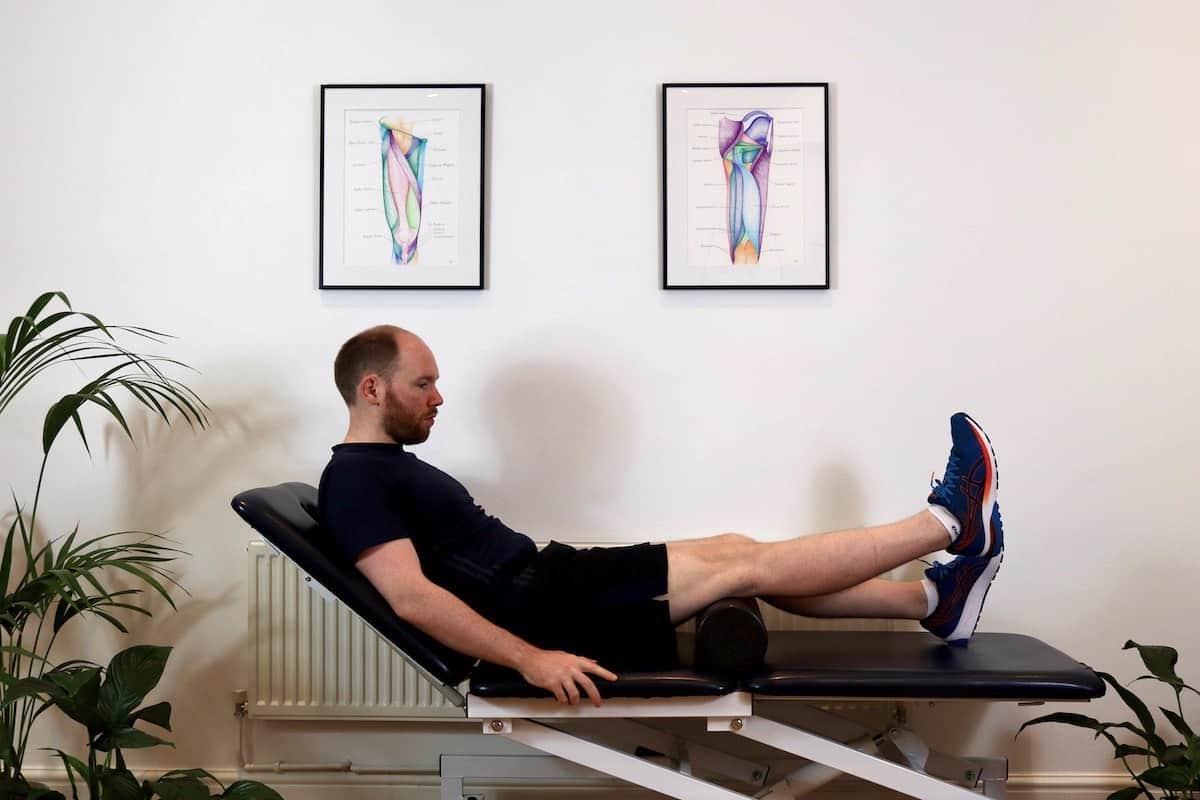
Sitting with your legs out straight in front of you, put a rolled-up towel or small cushion under your knee. Push your knee down into the pillow to straighten your knee, causing your ankle to lift off the floor.
You can place your hand on the front of your thigh and feel that the inner part of the quads is also working.
Stand with your feet hip-width apart and a resistance band around your thighs above your knees. Keeping your weight on your heels, lower your pelvis down and back into a shallow squat, bending your knees to 60º. Keep pressure on the band by pushing your thighs out. This works your gluteal muscles.
To return up, push your pelvis forward as you straighten your knees, and repeat.
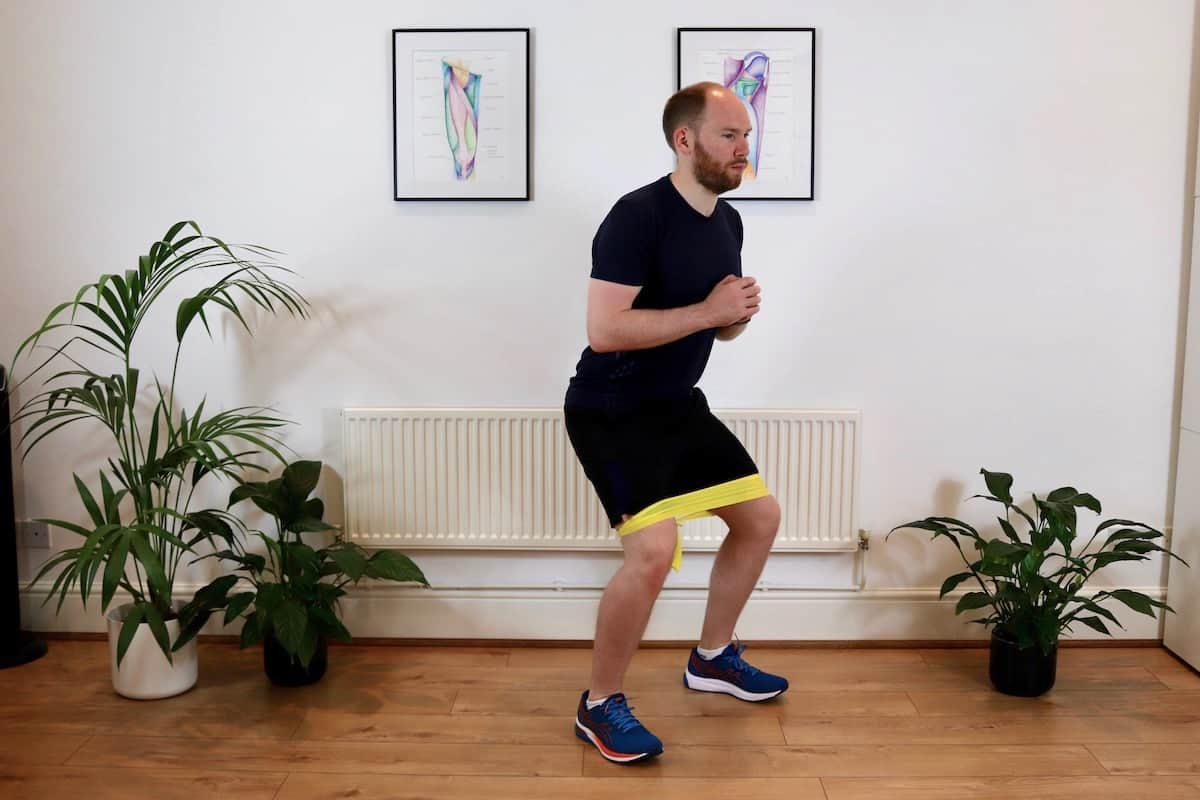
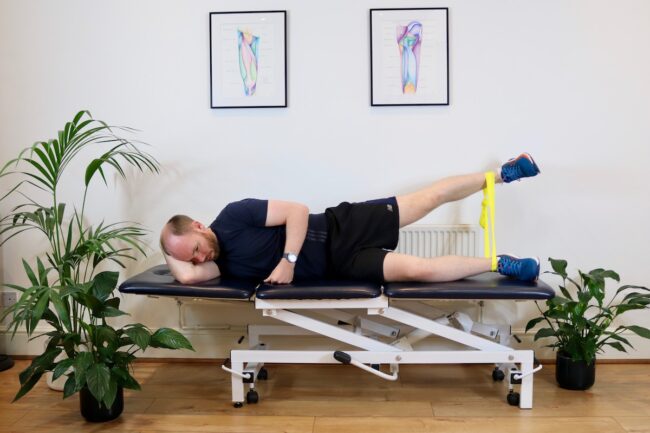
Lying on your side with a resistance band around your ankles. Your bottom leg should be bent to help keep you stable, and your top leg should be straight and in line with your body.
Lift your top leg diagonally up and back while keeping your pelvis still. You should feel your glutes working. These are the muscles on the outside of your buttocks. Slowly lower your leg and repeat.
Standing on one leg with a band tied around your other ankle and a stable base, such as a table leg. Keeping upright and straight through your body, pull the band inwards and across your body.
You can alternate pulling the band in front of your body and behind. Slowly return the band out to the side and repeat.
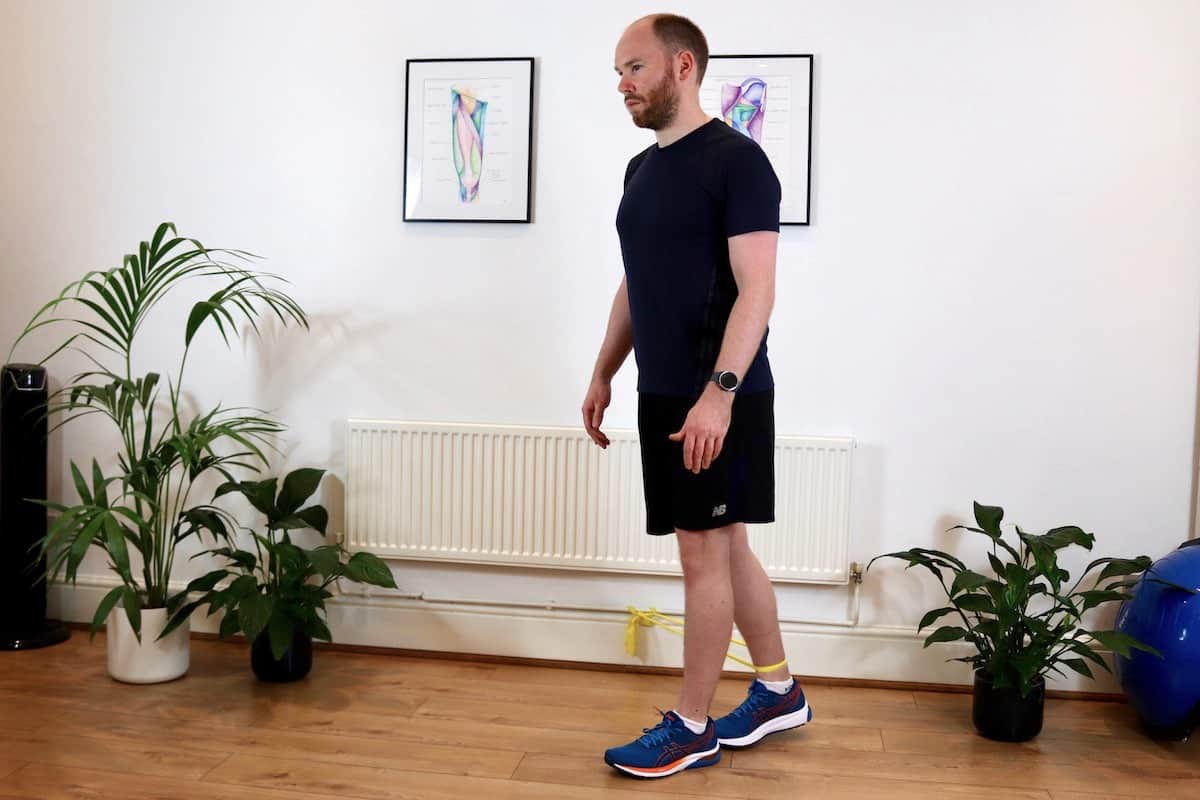
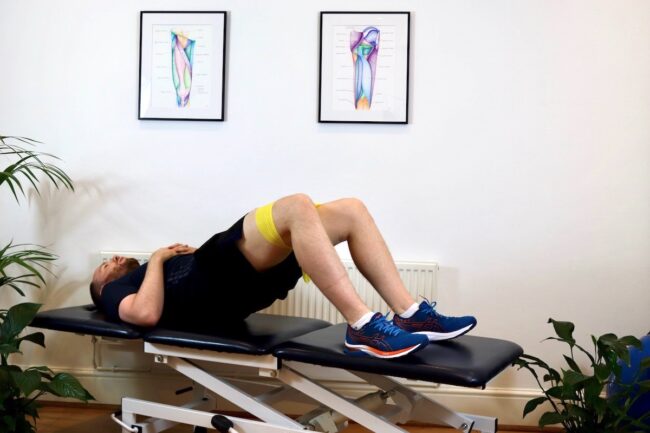
Lie on your back with a band around your thighs just above your knees. Bend your knees to 60º with your feet hip-width apart. Tilt your pelvis backwards to flatten your back against the floor, peel your pelvis off the floor leading with your tailbone.
Feel it working your hamstring at the back of your thighs and your glutes. Slowly curl back down as you lower, and repeat.
Addressing tight muscles around the knee is essential. Muscle tightness can affect the movement of the patella and the pressure of the patella on, the femoral intracondylar groove. Both can cause instability of the patella and increase the risk of subluxation and dislocation.
Here are the top stretching exercises for patella instability, subluxation and dislocation. Hold these stretches for a minimum of 30 seconds. This has more of a long-lasting effect on relaxing the muscles. These stretches should be done 3 or more times per day.

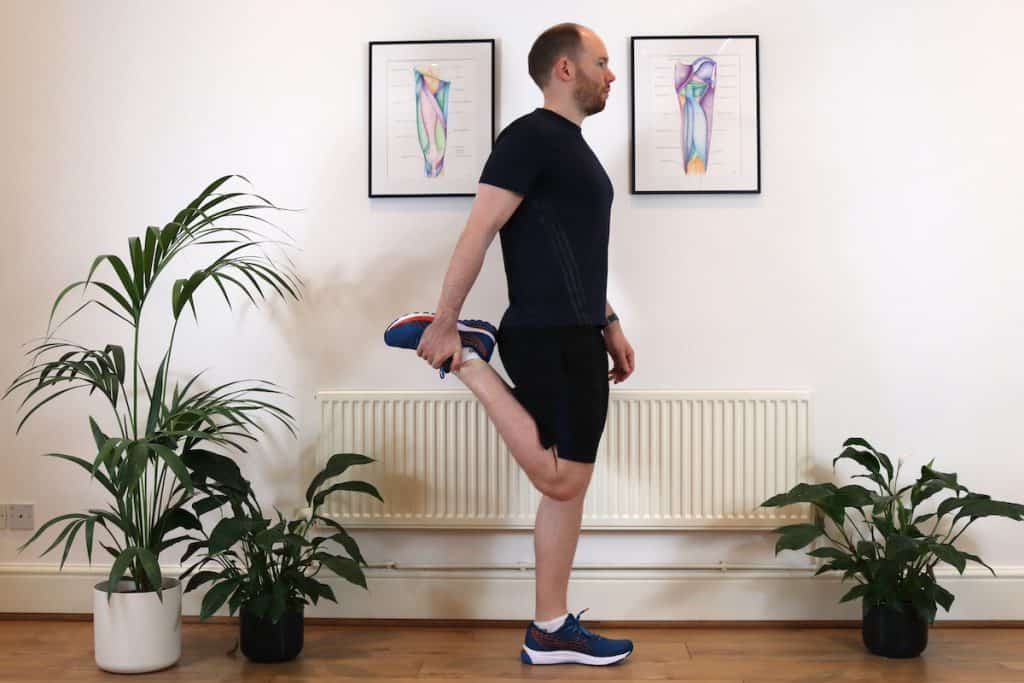

This article is written by James McCormack, a Lower Limb Specialist who is an expert in treating Patella Subluxation and Dislocation.
This is not medical advice. We recommend a consultation with a medical professional such as James McCormack if you are experiencing any of the symptoms discussed in this article. James offers Online Physiotherapy Appointments weekly and face-to-face appointments in his London clinic.
Related Article: Knee Dislocation